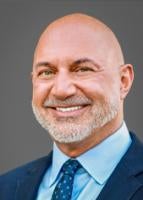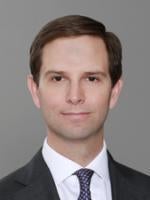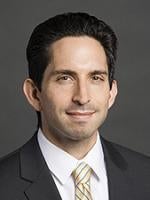Federal courts closed out 2021 with a flurry of securities decisions in the month of December. In this update, we discuss two decisions involving claims under Section 10(b) of the Securities Exchange Act of 1934 and Rule 10b-5 based on (i) alleged “channel stuffing”—a company’s practice of shipping excessive product to its distributors, and recognizing revenue at the time of and on such shipments, when it believes the distributors will not be able to sell all such product in the particular period—and (ii) an allegedly over-hyped COVID-19 vaccine candidate.
In In re Hain Celestial Group, Inc. Securities Litigation,1 the U.S. Court of Appeals for the Second Circuit revived Section 10(b) claims based on allegations that a company defrauded investors by making public statements attributing growing sales to strong consumer demand, without disclosing that it achieved its sales through “unsustainable” channel stuffing. The court below dismissed the claims, determining that the channel stuffing was legitimate and non-fraudulent. As the court explained, plaintiffs failed to plead that the company offered distributors an “absolute right” to return products; therefore, the company did not improperly book sales achieved through channel stuffing as revenue. According to the court, the company had no obligation to disclose legal sales incentives simply because plaintiffs alleged that they were unsustainable. The Second Circuit, however, reversed based on a perceived flaw in the district court’s reasoning: its failure to consider whether, although there was no actionable allegation of channel stuffing in violation of Rule 10b-5(a) and (c), the company should have disclosed that its high sales volume was achieved in part through unsustainable channel stuffing to avoid rendering statements attributing its sales to strong consumer demand misleading in violation of Rule 10b-5(b). Hain is notable for its exposition of the subsections of Rule 10b-5, as well as the possibility that future plaintiffs may wield the decision to advocate for a broadened duty to disclose “unsustainable” business practices, contrary to prior Second Circuit precedent.
In In re Vaxart, Inc. Securities Litigation,2 the U.S. District Court for the Northern District of California allowed Section 10(b) claims to survive a motion to dismiss based on allegations involving two press-release headlines—one about a company’s purported selection for Operation Warp Speed; the other about a third party’s ability to manufacture and distribute “a billion or more doses” of vaccine. Even though the text of the releases clarified the assertions, the Court concluded that, in light of the “presentation,” a reasonable investor would have been misled into believing the company was on the precipice of developing a successful COVID-19 vaccine. The decision illustrates the liability risks that may arise from undue “emphasis” and “gloss” in public statements. Nonetheless, the Court arguably erred in brushing aside the significance of clarifying information and disclaimers contained in the text of the press releases.
I. In re Hain Celestial Group: Second Circuit Revives Section 10(b) Claims Based on Non-Fraudulent “Channel Stuffing”
A. Background
“Channel stuffing” generally refers to a company’s practice of “flood[ing] distribution channels by employing incentives to induce customers into purchasing their products in large quantities, creating a short-term bump in revenue and excess supply in the distribution chain.”3 Channel stuffing may involve efforts to move sales to an earlier quarter by offering distributors incentives, such as discounts or favorable credit terms, to take on extra inventory.4 The practice is not inherently fraudulent or illegal, because “a seller might have a realistic hope that stuffing the channel of distribution would incite his distributors to more vigorous efforts to sell the stuff lest it pile up in inventory.”5 As some courts have recognized, channel stuffing is fraudulent only when used “to book revenues on the basis of goods shipped but not really sold because the buyer can return them.”6 In that situation, the sales are effectively “sales on consignment,” which accounting rules do not permit to be booked as revenue.7
Hain involved alleged channel stuffing at the Hain Celestial Group, Inc., a publicly traded company that manufactures and markets organic and natural products. In the mid-2010s, Hain was struggling to meet revenue targets and Wall Street projections due to increased competition. In response, Hain allegedly sought to ramp up quarterly sales by offering distributors discounts and financial incentives to take on more product, as well as an “absolute right” to return any unsold goods the following quarter. Hain ceased its practices of channel stuffing in mid-2016, after an audit identified it as a potential accounting issue. In August 2016, Hain announced it would be delaying release of its 2016 financial results and not meeting revenue targets, after which its share price fell by 26%. And in November 2016, the company announced that its audit committee had completed an internal review “into concessions with respect to certain distributors in the United States.”8 Although the review “found no evidence of intentional wrongdoing in connection with [Hain’s] financial statements,” the company announced it had “begun to implement a remediation plan to strengthen its internal controls and organization.”9
In the course of these events, Hain investors filed putative class actions alleging securities fraud, which were consolidated before the late Judge Arthur D. Spatt of the U.S. District Court for the Eastern District of New York. On August 4, 2017, lead plaintiffs filed a consolidated amended complaint asserting claims against Hain and its current and former executives under Sections 10(b) and 20(a) of the Exchange Act and Rule 10b-5. Among other things, plaintiffs alleged that defendants misled investors by failing to disclose that they were misclassifying inventory forced onto distributors as revenue, and their conduct constituted a “device, scheme, or artifice to defraud” and “act, practice, or course of business which operates . . . as a fraud or deceit” in violation of subsections (a) and (c) of Rule 10b-5. The defendants moved to dismiss. Evaluating the motion, the district court concluded that plaintiffs did not allege sufficient facts, with particularity, to support an inference that Hain offered its distributors an “absolute right” to return the products—a prerequisite for channel stuffing to constitute a fraud.10 Further, the court found that the value of the returns, if any, was “quite insignificant”: Hain’s 2016 10-K disclosed that any accounting errors were “immaterial.” Therefore, this was not a situation where a material amount of sales were improperly booked as revenue.11 Concluding that Hain’s channel stuffing was neither fraudulent nor illegal, the court dismissed the claims but granted plaintiffs leave to amend.
On May 6, 2019, plaintiffs filed a second amended complaint, adding details about Hain’s subsequent settlement with the SEC and information from confidential witnesses.12 Plaintiffs also “changed their primary theory of liability from alleging a fraudulent channel stuffing scheme under Rule 10b-5 subsections (a) and (c) to alleging that the Defendants failed to disclose purportedly unsustainable business practices in violation of Section 10(b) and Rule 10b-5(b).”13 Under their refined theory, plaintiffs alleged that defendants misled investors by, among other things, making public statements attributing Hain’s high sales volume to strong consumer demand, while omitting that its sales volume was achieved, in part, due to the offer of “unsustainable” channel-stuffing incentives. Despite the twist, the court held that plaintiffs failed to remedy the fatal defect of the prior complaint, i.e., failure to adequately allege that distributors had an “absolute right of return.”14 To the contrary, Hain’s settlement with the SEC “exonerated” defendants, failing to mention any distributor return right and concluding that “[n]one” of the incentives offered by Hain to distributors was “improper” and “[t]he vast majority of the products . . . ultimately sold through to retailers.” In the court’s view, defendants had no duty to disclose “wholly legal sales incentives” simply because plaintiffs alleged those incentives to be “unsustainable.”15 The district court thus dismissed the complaint a second time, this time with prejudice. Plaintiffs appealed.
B. The Decision
A panel of the Second Circuit reversed.16 As the Court explained, subsections (a), (b), and (c) of Rule 10b-5 prohibit “three different things.”17 Subsections (a) and (c) are “similar” in that they prohibit the “employ[ment of] any device, scheme, or artifice to defraud” and “engag[ing] in any act, practice, or course of business which operates or would operate as a fraud or deceit,” respectively.18 Subsection (b), by contrast, “focuses not on schemes, devices, or practices, but on statements made,” rendering it unlawful “[t]o make any untrue statement of a material fact or to omit to state a material fact necessary in order to make the statements made . . . not misleading.”19 Unlike (a) and (c), subsection (b) “does not require that the defendant have used a fraudulent or otherwise illegal device, scheme, artifice, act, practice, or course of business.” Rather, “[i]ts focus is . . . on whether something said was materially misleading, either because it included a false statement of a material fact or because it omitted to state a material fact which omission rendered the things said misleading.”20
The flaw in the district court’s analysis, the Second Circuit explained, was that it “mistakenly imported the requirement of clauses (a) and (c) of a fraudulent scheme or practice into clause (b), which includes no such requirement.”21 It was not enough for the lower court to conclude that the channel stuffing itself was not a “fraudulent or deceptive device, scheme, artifice, act, or practice” under subsections (a) and (c) because subsection (b) still may require disclosure of non-fraudulent acts to avoid rendering other statements “materially misleading” (in this case, the company’s statements attributing its sales growth to strong consumer demand). “The success of such a complaint in alleging a violation of clause (b) does not depend on whether the alleged channel stuffing practices themselves were fraudulent or otherwise illegal.”22 In light of the perceived error, the Court remanded the case, directing a newly assigned judge to “consider afresh whether the Complaint adequately stated a claim under Rule 10b-5(b).”23
C. Implications
The takeaway from Hain is that a company may need to disclose legal, non-fraudulent conduct—which constitutes neither a “device, scheme, or artifice to defraud” nor an “act, practice, or course of business which operates . . . as a fraud or deceit”—to avoid running afoul of Rule 10b-5(b). At first blush, this result may appear surprising in light of the Supreme Court’s 2019 decision in Lorenzo v. SEC, which held, conversely, that conduct that does not violate subsection (b) nonetheless may violate subsections (a) and (c).24 In Lorenzo, the Court suggested that subsections (a) and (c) are broader than (b), explaining that they “capture a wide range of conduct” and are “sufficiently broad” to encompass deceptive conduct that does not fall within the scope of (b), such as dissemination of a false statement made by another person.25 The Supreme Court in Lorenzo, however, did not address whether there may be instances in which legal, non-fraudulent conduct must be disclosed “to prevent the corporation’s other statements from being misleading.”26 Indeed, it is well-established in the Second Circuit and elsewhere that “[w]hen a corporation does make a disclosure—whether it be voluntary or required—there is a duty to make it complete and accurate.”27
Nonetheless, the Second Circuit in Hain arguably misconceived the decision below by characterizing it as “import[ing] the requirement of clauses (a) and (c) of a fraudulent scheme or practice into clause (b).” Rather, the district court directly addressed plaintiffs’ allegations under subsection (b), explaining that defendants “were under no generalized obligation to disclose wholly legal sales incentives simply because the Lead Plaintiffs allege those incentives to be unsustainable.”28 The district court explained that a company has no duty to paint its conduct in a negative light: “up to a point, companies must be permitted to operate with a hopeful outlook,” and one has “no duty to disparage its own competitive position in the market where it has provided accurate hard data from which analysts and investors can draw their own conclusions about the company’s condition and the value of its own stock.”29 Previously embracing these principles, the Second Circuit once “easily rejected” the theory of fraud advanced in Hain, refusing to impose liability based on a company’s alleged failure to “acknowledge the long-term unsustainability of its business model.”30
As for the contention that Hain was required to disclose its channel stuffing because it publicly attributed its sales to other factors, such as consumer demand, the district court disposed of that argument as well. The court explained that companies are not required to disclose “all ‘information concerning the source of [their] success’ every time they ‘put[] the topic of the cause of [their] financial success at issue.’”31 “Where a company puts at issue the cause of its financial success, it may mislead investors if the company fails to disclose that a material source of its success is the use of improper or illegal business practices.”32 In this case, there was nothing “improper” or “illegal” to disclose.
The Second Circuit did not address these points, nor did it purport to abrogate the precedent cited in the district court’s analysis. Rather, the Court reversed solely on a perceived (and debatable) flaw in the district court’s reasoning in “import[ing]” the requirements of subsection (a) and (c) into (b), and remanded so that a newly assigned judge could consider the motion to dismiss “afresh.” Thus, Hain could be a mere bump in the road on the way to ultimate dismissal of plaintiffs’ claims, and its significance should not be overstated. Still, it is possible that future plaintiffs may attempt to wield Hain more broadly—for example, by arguing that it expands an issuer’s duty to identify allegedly “unsustainable” business practices, despite precedent to the contrary. Therefore, how other courts approach the decision—including the district court on remand—will be worth watching.
II. In re Vaxart: District Court Permits Section 10(b) Claims Based on Hyped COVID-19 Vaccine Candidate
A. Background
Vaxart, Inc., a publicly traded vaccine development company, struggled for years to bring a vaccine to the market. That ostensibly changed after the onset of the COVID-19 pandemic, with Vaxart announcing a program to develop a COVID-19 vaccine based on a proprietary “oral vaccine platform.” Apparently buoying Vaxart’s prospects, the federal government announced in May 2020 Operation Warp Speed, an effort to support multiple COVID-19 vaccine candidates to speed up development. By early June, news reports identified multiple companies selected to receive federal funding under Operation Warp Speed (including Pfizer and Moderna), and speculation mounted as to which other companies, such as Vaxart, could be next in line.
Amid the speculation, Vaxart doubled down on publicity touting its vaccine development progress. On June 15, 2020, the company announced the appointment of a new CEO “to Accelerate Advancement of COVID-19 and Other Programs,” and touted its “development of what could be the most effective and most convenient COVID-19 vaccine.” On June 24, Vaxart trumpeted the addition of its stock to the Russell 3000 index, as well as its “ongoing effort to disrupt the vaccine industry” by developing a “transformative” oral COVID-19 vaccine. The next day, Vaxart announced a “Memorandum of Understanding” with Attwill Medical Solutions to manufacture and distribute its vaccine, which, according to the press release headline, “Enable[d] Production of a Billion or More COVID-19 Vaccine Doses Per Year.” On June 26, the company issued a press release titled “Vaxart’s COVID-19 Vaccine Selected for the U.S. Government’s Operation Warp Speed.” The text of the release, however, stated only that its vaccine candidate had “been selected to participate in a non-human primate (NHP) challenge study, organized and funded by Operation Warp Speed.” Vaxart’s stock price rose 28% after the announcement.
The wave of positive publicity soon came to an end. On July 25, the New York Times published an article stating that “[s]ome officials at the Department of Health and Human Services have grown concerned about whether companies including Vaxart are trying to inflate their stock prices by exaggerating their roles in Warp Speed.” The same day, the Department of Health and Human Services (HHS) sent out a tweet clarifying that it had “entered into funding agreements with certain vaccine manufacturers,” and was “negotiating with others,” but “[n]either is the case with Vaxart.” Over the next three weeks, the Vaxart’s stock price dropped 18%. Shareholder litigation ensued in the U.S. District Court for the Northern District of California, with plaintiffs alleging that Vaxart and its executives made materially misleading statements about Vaxart’s prospects in violation of Sections 10(b) and 20(a) of the Exchange Act and Rule 10b-5. The defendants moved to dismiss.
B. The Decision
The District Court (Hon. Vince Chhabria) denied the motion to dismiss as to Vaxart and its executives.33 At the outset, the Court explained that whether a statement is materially misleading in violation of Rule 10b-5 should be evaluated “through a fisheye not a telescope.”34 Words cannot be viewed “in complete isolation”; rather, they must be read “in light of all the information then available to the market” to decide if they “conveyed a false or misleading impression.”35 Thus, statements that are “literally true on their face may nonetheless be misleading when considered in context.”36 “Circumstance, setting, and even ‘manner of presentation’ all matter.”37
Applying these principles, the Court ruled that plaintiffs plausibly alleged a Section 10(b) violation based on the announcement that Vaxart had been “[s]elected for the U.S. Government’s Operation Warp Speed.” The Court acknowledged that the full press release clarified that Vaxart was selected to participate in a primate study; it did not mention receipt of federal funding. Yet, in the Court’s view, the headline alone would have plausibly misled a reasonable investor: “Just as words matter, so too does ‘manner of presentation.’”38 The Court, moreover, inferred that defendants intentionally deceived investors, because Vaxart allegedly knew the truth “long before the press release,” and later “toned down” its public description of its involvement in Warp Speed, stating only that it had been selected for a “preclinical program.” The Court also found that the complaint adequately pled loss causation (a causal link between the misrepresentation and economic loss), because Vaxart’s stock price dropped soon after the New York Times article and HHS tweet confirming the company’s failure to receive federal funding.39
Furthermore, the Court held that the headline about the Attwill relationship—that it enabled manufacture of “a billion or more doses per year”—independently supported Section 10(b) liability. According to the Court, plaintiffs plausibly alleged that Attwill lacked the capacity, due to regulatory shortcomings and limited staff, to produce “even one dose, never mind one billion.” The Court considered the headline deceptive, despite the fact that the press release accurately disclosed that the parties had entered only into a “Memorandum of Understanding” (an agreement to agree), and thus a sophisticated investor could have discerned that the relationship was “not as big a deal as it seems.”40 The Court also found it “difficult to imagine that a fledgling firm like Vaxart—a firm that has never taken a successful vaccine to market—would fail to do basic diligence on its key partner in developing a crucial product.” As for loss causation, although the New York Times article and HHS tweet did not mention Attwill, the Court held that they served as “corrective disclosures” just the same: they “rendered ‘some aspect’ of the Attwill release ‘false or misleading’ by making clear that Vaxart was nowhere near producing a single dose of the coronavirus vaccine, and certainly not well-positioned to take on the likes of Pfizer, Moderna, or J&J.”41 The Court thus permitted plaintiffs’ Section 10(b) claims to proceed to the class-certification stage.
C. Implications
Vaxart illustrates that attention-grabbing press releases, with headlines that may appear misleading on their own, can be risky. As the Court explained, statements that are “literally true on their face” may be deemed materially misleading if, “when considered in context,” they “convey[] a false or misleading impression.”42 “Circumstance, setting, and even ‘manner of presentation’ all matter.”43 Thus, “emphasis and gloss can, in the right circumstances, create liability.”44 In this case, the Court concluded that Vaxart crossed the line, taking advantage of a public interest in COVID-19 vaccine developments and exaggerating its own prospects in an effort to boost its stock price.
The Court, however, downplayed potentially fatal deficiencies with respect to the elements of a Section 10(b) claim. An essential element of a Section 10(b) claim is “a material misrepresentation or omission by the defendant,”45 and a case can be made that the headline about Operation Warp Speed was neither. While the headline was not the picture of clarity, the body of the press release revealed the truth: Vaxart was selected to participate in a primate study under Operation Warp Speed. That context matters: as the Supreme Court has recognized, investors read each statement in an SEC filing, “whether of fact or of opinion, in light of all its surrounding text, including hedges, disclaimers, and apparently conflicting information.”46 And faced with a substantially similar situation involving another company—Inovio Pharmaceuticals—the U.S. District Court for the Eastern District of Pennsylvania dismissed the Section 10(b) claim.47 There, as in Vaxart, Inovio’s press release announced that its vaccine candidate had been “Selected for the U.S. Government’s Operation Warp Speed.” Noting that the full release accurately disclosed that it was chosen “to participate in a non-human primate (NHP) challenge study,” however, that court rejected that a “reasonable investor with access to all this information would have thought Inovio would receive government funding for its vaccine.”48
As for the headline about Attwill, even if it was misleading, plaintiffs arguably failed to establish the essential element of loss causation. As the Ninth Circuit has recognized, to plead loss causation based on “corrective disclosure,” a plaintiff must show that the disclosure “revealed, in whole or in part, the truth concealed by the defendant’s misstatements.”49 But here, the purported corrective disclosures—the New York Times article and HHS tweet—addressed solely whether Vaxart was receiving federal funding; neither mentioned Attwill, let alone its lack of manufacturing capabilities. Thus, the Court’s assessment that the disclosures “rendered ‘some aspect’ of the Attwill release ‘false or misleading’” may be a stretch. A plaintiff cannot state a Section 10(b) claim by mixing and matching elements for two different statements; it “must specifically allege why each statement meets each element of section 10(b) and Rule 10b-5, including the misrepresentation made.” [50] It remains to be seen whether the Vaxart defendants will seek permission to challenge the dismissal through an interlocutory appeal.
1 20 F.4th 131 (2d Cir. 2021).
2 -- F. Supp. 3d --, No. 20-cv-05949-VC, 2021 WL 6061518 (N.D. Cal. Dec. 22, 2021).
3 Garfield v. NDC Health Corp., 466 F.3d 1255, 260 n.1 (11th Cir. 2006); see also Makor Issues & Rights, Ltd. v. Tellabs, Inc., 513 F.3d 702, 709 (7th Cir. 2008) (“The term refers to shipping to one’s distributors more of one’s product than one thinks one can sell.”) (Posner, J.).
4 See, e.g., J. Robert Brown, Jr., The Regulation of Corporate Disclosure § 5.07[C][4] (4th ed. 2022-1 Supp.); In re Sunbeam Corp., SEC Release No. 7976, 2001 WL 616627, at *1 n.4 (May 15, 2001) (“‘Channel stuffing’ denotes the pulling forward of revenue from future fiscal periods by inducing customers -- through price discounts, extended payment terms or other concessions -- to submit purchase orders in advance of when they would otherwise do so.’”).
5 Tellabs, 513 F.3d at 709; see also In re Smith & Wesson Holding Corp. Sec. Litig., 669 F.3d 68, 76 (1st Cir. 2012) (“Such practices are neither inherently fraudulent nor always innocent; size, design, purpose, transparency, and history are all relevant.”); In re Harley-Davidson, Inc. Sec. Litig., 660 F. Supp. 2d 969, 985 (E.D. Wis. 2009); Carter v. Furniture Brands Int'l, Inc., No. 4:13CV1600 HEA, 2015 WL 357076, at *12 (E.D. Mo. Jan. 27, 2015); Brown, supra n.4, § 5.07[C][4] (“There is nothing inherently wrong with the approach.”).
6 Tellabs, 513 F.3d at 709; see also United States v. Baker, 923 F.3d 390, 393 (5th Cir. 2019) (describing “channel stuffing” as a “fraudulent scheme” in which a coconspirator agrees to purchase products and then return them in a subsequent period).
7 Tellabs, 513 F.3d at 709 (quoting H. David Sherman et al., Profits You Can Trust, Spotting & Surviving Accounting Landmines 30 (Financial Times Prentice Hall 2003)).
8 Hain Celestial Announces Completion of Independent Audit Committee Review, Hain Celestial Grp., Form 8-K, Ex. 99.1 (Nov. 17, 2016).
9 Id.
10 In re Hain Celestial Grp. Inc. Sec. Litig., 16-cv-04581 (ADS), 2019 WL 1429560, at *14-16 (E.D.N.Y. Mar. 29, 2019).
11 Id. at *16-17.
12 As part of the settlement, Hain consented to entry of an order finding that, from 2014 until May 2016, Hain personnel “gave sales incentives to certain distributors to promote sales at the end of quarters” and that, although “[t]hese incentives had potential accounting implications,” Hain “ultimately determined that no financial restatements were required.” In re The Hain Celestial Grp., Inc., SEC Release No. 3997, 2018 WL 6499907, at *1 (Dec. 11, 2018). The order further identified several types of incentives offered by Hain to distributors—“cash incentives,” “extended payment terms,” “discounts,” and “spoils coverage”—and noted that, while “[n]one of these types of incentives are improper,” “they could have financial reporting implications.” Id. at *2. The order required Hain to cease and desist from committing violations of Sections 13(b)(2)(A) and (b)(2)(B) of the Exchange Act—pertaining to the maintenance of accounting records and accounting controls, respectively—but did not impose a civil penalty. See id. at *6.
13 In re Hain Celestial Grp. Inc. Sec. Litig., 16-cv-04581 (ADS), 2020 WL 1676762, at *9 (E.D.N.Y. Apr. 6, 2020).
14 Id. at *11.
15 Id. at *12.
16 The panel consisted of Circuit Judges Pierre Leval, Robert Sack, and Michael Park.
17 Hain, 20 F.4th at 136.
18 Id. (quoting 17 C.F.R. § 240.10b-5(a), (c)).
19 Id. (quoting 17 C.F.R. § 240.10b-5(b)).
20 Id.
21 Id.
22 Id. at 137.
23 Id. at 138.
24 Lorenzo v. SEC, 139 S. Ct. 1094, 1100-01 (2019).
25 Id. at 1101.
26 In re Braskem S.A. Sec. Litig., 246 F. Supp. 3d 731, 752 (S.D.N.Y. 2017) (collecting cases).
27 In re Marsh & Mclennan Cos. Sec. Litig., 501 F. Supp. 2d 452, 469 (S.D.N.Y. 2006) (quoting Roeder v. Alpha Indus., Inc., 814 F.2d 22, 26 (1st Cir. 1987)).
28 Hain, 2020 WL 1676762, at *12.
29 Id. at *12-13 (quoting In re Nokia Oyj (Nokia Corp.) Sec. Litig., 423 F. Supp. 2d 364, 397-98 (S.D.N.Y. 2006), and Donna Karan Int’l Sec. Litig., No. 97-cv-2011, 1998 WL 637547, at *13 (E.D.N.Y. Aug. 14, 1998)).
30 Id. at *13 (quoting Boca Raton Firefighters & Police Pension Fund v. Bahash, 506 F. App’x 32, 38 (2d Cir. 2012)).
31 Id. (quoting In re Van der Moolen Holding N.V. Sec. Litig., 405 F. Supp. 2d 388, 401(S.D.N.Y. 2005)).
32 Id. (quoting Diehl v. Omega Protein Corp., 339 F. Supp. 3d 153, 165 (S.D.N.Y. 2018)) (emphasis added in Hain).
33 The district court, however, granted the motion to dismiss as to Armistice Capital LLC, Vaxart’s majority shareholder. Contrary to their theory of liability, plaintiffs did not plausibly allege that Armistice sold any shares during the period of the alleged misstatements, nor that it had any involvement in creating or disseminating the allegedly misleading press releases. See Vaxart, 2021 WL 6061518, at *8-9.
34 Id. at *4.
35 Id. (quoting In re Convergent Techs. Sec. Litig., 948 F.2d 507, 512 (9th Cir. 1991)).
36 Id. (quoting Miller v. Thane Int’l, Inc., 519 F.3d 879, 886 (9th Cir. 2008)).
37 Id. (quoting McMahan & Co. v. Wherehouse Entmt., Inc., 900 F.2d 576, 579 (2d Cir. 1990)).
38 Id. at *5 (quoting McMahan, 900 F.2d at 579).
39 Id. at *7.
40 Id. at *5.
41 Id. at *8 (quoting In re Bofl Holding, Inc. Sec. Litig., 977 F.3d 781, 790 (9th Cir. 2020)).
42 Id. at *4 (quoting Convergent, 948 F.2d at 512, and Miller, 519 F.3d at 886).
43 Id. (quoting McMahan, 900 F.2d at 579).
44 Lucia v. Prospect St. High Income Portfolio, Inc., 36 F.3d 170, 175 (1st Cir. 1994) (quoting Isquith v. Middle S. Utils., Inc., 847 F.2d 186, 203 (5th Cir. 1988)).
45 Erica P. John Fund, Inc. v. Halliburton Co., 563 U.S. 804, 809 (2011).
46 Omnicare, Inc. v. Laborers Dist. Council Const. Indus. Pension Fund, 575 U.S. 175, 190 (2015).
47 See McDermid v. Inovio Pharms., Inc., 520 F. Supp. 3d 652, 668-69 (E.D. Pa. 2021).
48 Id. at 669.
49 Bofl, 977 F.3d at 791 (emphasis added).
50 In re Sona Nanotech, Inc. Sec. Litig., No. 2:20-cv-11405-MCS-MAA, 2021 WL 5504758, at *5 (C.D. Cal. Oct. 28, 2021); see Stoneridge Inv. Partners, LLC v. Scientific-Atlanta, 552 U.S. 148, 158 (2008) (to create Section 10(b) liability, a defendant’s conduct must “satisfy each of the elements or preconditions for liability”).








 />i
/>i
